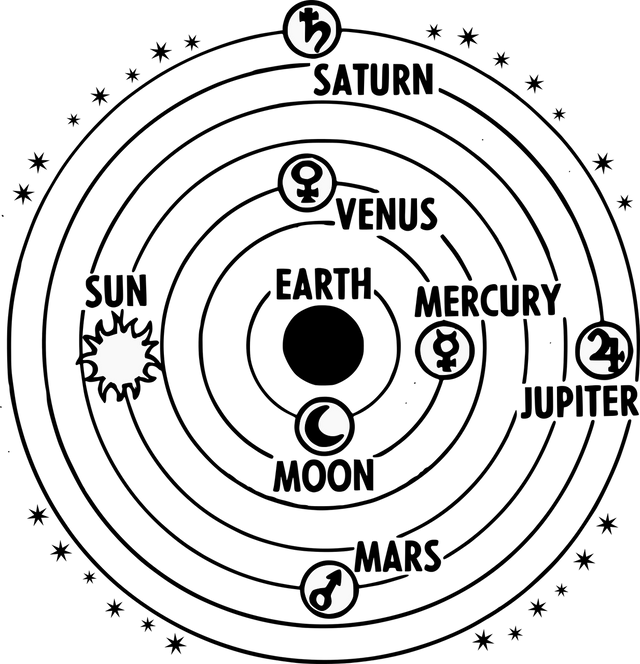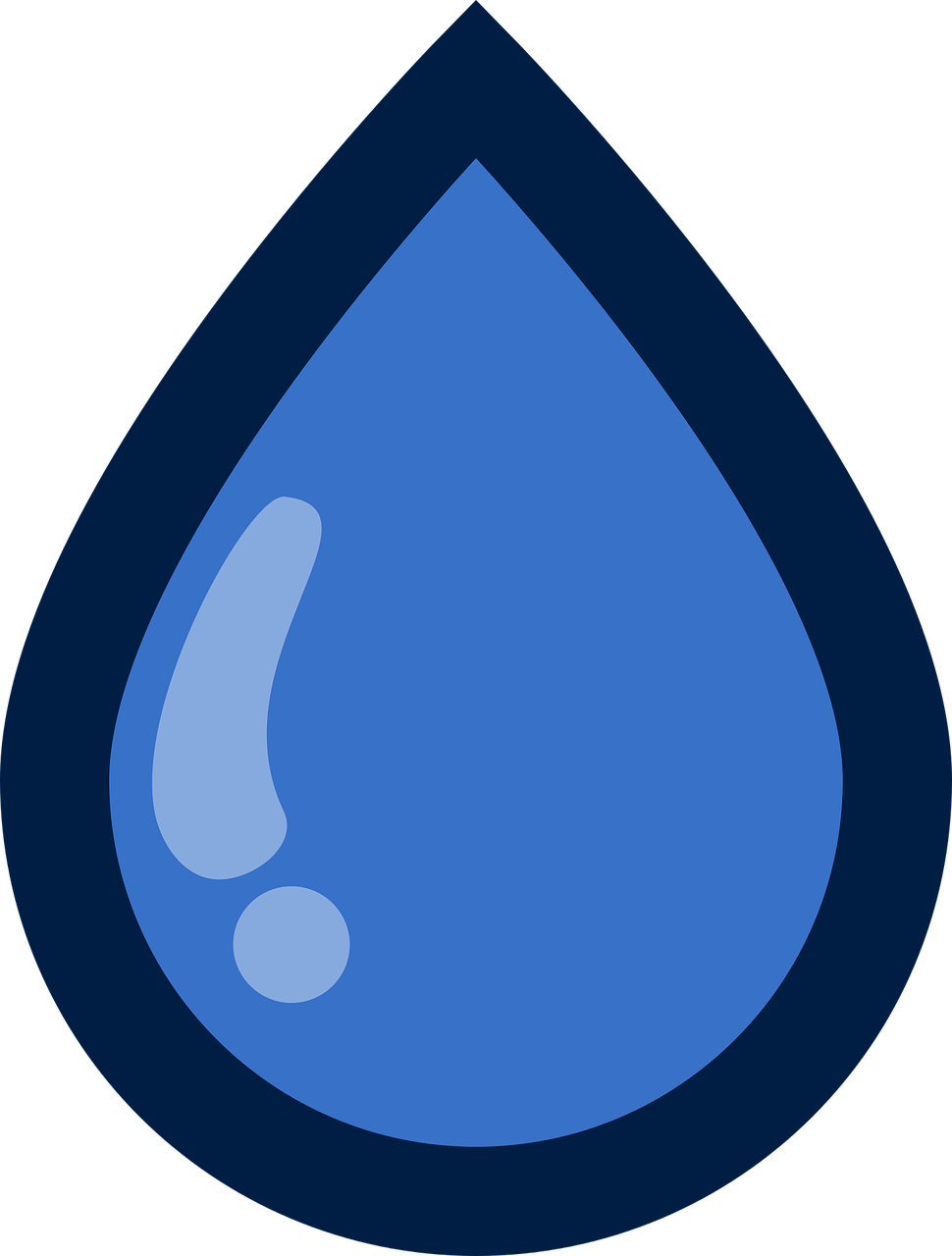50 facts about Earth that you didn't know

Earth
The Earth is unique and contains treasures of all kinds. At a time when astrobiology increasingly leads to the discovery of new planets, thus multiplying the estimated number of potentially habitable worlds, it is also worth remembering that the "pale blue dot" remains our historic focus. Here are two things to know (fifty) about our good old Earth. What to pique your intellectual curiosity!
1 - Rocky Planet
Our home, the Earth, is the third planet on the Solar System. It is also the only one known to date with liquid oceans on the surface and above all, it is the only one to support life as we know it. It is also one of the four telluric planets of our system among which you will find Mercury, Venus and Mars. These bodies are mainly composed of rocks and metals and have a relatively high density, slow rotation, solid surface, no rings and few satellites.
2 - The Earth is not a perfect sphere
The force of gravitation applies to all bodies, like the Earth. Starting from this principle and only from this principle, the Earth would be a perfect sphere. Except that the Earth is not immobile, it rotates and therefore the centrifugal force generated by this movement is maximum at the equator and zero at the poles. Result: the Earth is "stretched" and has a kind of bead at the equator. Finally, the surface of the Earth is not completely smooth. Tips to more than 8000 m with the Everest to the 11 000 meters deep of the pit of Mariannes and of course, the tectonics of the plates which makes vary the density of the earth mantle. All this results in a distribution of the totally unequal land mass and thus a distribution of matter which is equally so.
3 - A nice waistline
As we have just seen, the Earth is not round in the true sense of the term. By being slightly crushed at the poles and slightly swollen at the equator, it is normal that our good old Earth has a generous waistline. At the equator, the circumference of the globe is 40,075 kilometers.
4 - The Earth is a bolide
If we feel that we are perfectly immobile when we do not move, the reality is a little more complex. The Earth rotates at an almost constant speed since it makes a turn on itself in a day. At the equator, this equates to an average speed of 1670 km / h around the center of the earth.
5 - The turning head
Yes, because the Earth is also orbiting the sun, moving at 107,280 km / h. And the Sun itself turns in the Milky Way in relation to its center at a dizzying speed of 700 000 km / h approximately!
Again ? For a stationary point on Earth, the speed relative to the center of the galaxy is therefore always between 591 000 and 809 000 km / h compared to the center of the galaxy!

6 - How old is the Earth?
In 1953, the American geochemist Clair Patterson obtained the first precise dating of the age of the Earth and the Solar System by applying the method of uranium / lead isotopic dating. Based on the assumption that the Earth and meteorites were formed at the same time from a reservoir of identical material about 4.5 billion years ago, he deduced the age of the Earth. Today, we know that if the Solar System began to form rapidly 4.567 billion years ago, the formation of the Earth took only a few tens of millions of years.
7 - Earth recycles
The floor you walk on is constantly recycled. The rocks form the earth's crust, they are defined by the minerals that constitute them, by the way they have been set up and by the mutations they know over millennia. For yes, beyond all appearance, the rocks are in perpetual motion. "Nothing is lost, nothing is created" as it is said: the erosion of rocks, eruptive or massive causes others (sedimentary rocks) to bury themselves and to melt into metamorphic rocks. They will feed the magma that will give rise to new eruptive rocks. Thus works the great cycle of rocks.
8 - Moon tremors?
The Moon seems rather dead and inactive. It actually suffers from trembling moon or "earthquakes", but on the moon. They are less frequent and less intense than those that sometimes shake us and seem related to tidal constraints associated with the variable distance between the Earth and the moon. Moon tremors also tend to occur at great depths, midway between the lunar surface and its center.
9 - The Greatest Earthquake
The largest earthquake ever recorded was the Valdivia earthquake (magnitude 9.5) which occurred in Chile on May 22, 1960. It was followed by a devastating tsunami whose destructive effects were felt throughout the Pacific (Coasts of Hawaii and Japan). He killed a total of 5,700 people in Chile and left two million homeless, 61 in Hawaii and 130 in Japan.
10 - The hottest spot
It is El Azizia, Libya, where temperatures recorded by meteorological stations reached 57.8 ° C on 13 September 1922.
11 - The coldest?
A piece of land located near the crest of a mountain of ice between the Argus Domes (4093 m) and Fuji (3810 m), an area known as the Eastern Antarctic Plateau and located at More than 1000 kilometers inside the continent. The temperature dropped several dozen times to -92 ° C on a clear night in winter. The lowest temperature ever recorded was in August 2010: -93.2 ° C. The previous record, -89.2 ° C, dates back to 1983 at the Russian scientific station Vostok in eastern Antarctica.
12 - Extreme Continent
The southern continent, Antarctica, is a place of extreme with an ice cap containing about 70% of all the fresh water of the Earth and about 90% of all its ice. Antarctica is also considered a desert since the interior regions receive only about 50 millimeters of rainfall a year (usually in the form of snow, of course).
13 - The biggest stalagmite?
The biggest stalagmite confirmed in the world is in Cuba in Martín Infierno Cave. This mastodon stands at 67.2 meters in height.
14 - Strange gravity
Because the Earth is not a perfect sphere, its mass is unequally distributed, which means a slightly uneven gravity. A mysterious gravitational anomaly is found in Hudson Bay, Canada. The Laurentide, the former ice cap that covered northern America 20,000 years ago and was up to three kilometers thick, was quickly blamed.
Compressed during the Ice Age, the earth's crust began to rise when the ice melted. However, this rebound is very slow and even if the gravity gradually increases, it will take another 300,000 years before the effects of the ice age disappear. This ancient skyline also had two enormous ice domes, one on each side of present-day Hudson Bay, which caused a 60-meter rise in water level when they melted. However, the postglacial rebound explains only part of the gravitational field anomaly. The remainder would be due to movements of brewing within the terrestrial mantle.
15 - What is the magnetic pole?
This is the point of convergence of the magnetic field lines. The Earth's magnetic north pole, corresponding to the South Pole of the Earth's gigantic magnet, is the direction that your compass indicates. It moves an average of 40 kilometers per year, depending on the displacements of the Earth's core, which behaves like a giant dynamo producing a magnetic field.
16 - The biggest mountain?
The title of the highest mountain goes to the Everest ... or Mauna Kea, it's according to. The summit of Mount Everest is the highest from sea level, rising to 8,848 meters in height. However, the Mauna Kea, a volcano-sleeping shield of the United States located on the island of Hawaii, amounts to 17,170 meters (measured from the base to the top).

17 - When the Earth had two moons
The two lunar hemispheres have very distinct appearances: on one side the visible face that abounds in lunar seas and on the other the hidden face, hammered with craters and vast mountain ranges. This asymmetry between the two faces would be explained by the collision of a second moon on the hidden face at a relatively low speed, leading to an agglomerate of material instead of the formation of a crater. This collision would also explain the high concentration of potassium and other rare elements such as phosphorus in the subsoil of the visible surface. The shock having caused the magma to move towards the latter.
18 - The Earth would still have today a second moon
Scientists from Nasa identified a few months ago a pebble of a few tens of meters in orbit around our planet. For a few centuries at least - according to the calculations of American researchers - this small object called HO3 will keep company with our natural satellite.
19 - Stones in the Death Valley
In the Death Valley, in the United States, enormous stones crisscross an ancient dried-up lake, leaving behind hollows that allow us to observe their displacement. For if the Death Valley is one of the most arid areas in the world, the nights are particularly chilly and sometimes the rain comes to soak the area before freezing. It is the combination of these two factors aided by the wind that cause the rocks to move and move simultaneously. Certain ice sheets pushed by the breeze break indeed against the stones. In doing so, they impelled a tiny movement, too slow to be perceptible to the naked eye, but detectable with the beacons.
20 - 8 May 1978
On 8 May 1978, Peter Habeler and Reinhold Messner made the first ascent of Everest without oxygen.

21 - The Longest Mountain Range
To find the longest mountain range in the world, you are going to have to do some apnea. The mid-ocean ridge, the submarine chain of volcanoes, covers about 65,000 km. And climbs on average about 5.5 kilometers above the seabed.
22 - The largest living structures on Earth?
These are the coral reefs, made up of a multitude of polyps - small soft invertebrate organisms - connected by their outer limestone skeleton. The Great Barrier Reef, for example, is an entangled system consisting of some 3,000 reefs and 900 coral islands, traversed by narrow channels just beneath the surface of the Coral Sea. It stretches over 2,000 km and covers an area of approximately 350,000 km2 and is the largest living structure on Earth and the only one visible from space.
23 - The point on Earth the deepest
The Mariana Trench is the deepest oceanic pit currently known and is the deepest part of the Earth's crust. Depth: 10,916 meters.
24 - The lowest point on Earth
It is the Dead Sea, between Jordan, Israel and the West Bank. The surface of this super-salted lake is 423 meters below sea level.
25 - Lethal Lakes
You will find three fatal lakes in Cameroon and the border between Rwanda and the Democratic Republic of the Congo: Nyos, Monoun and Kivu. These volcanic lakes are the only ones in the world capable of producing limnic eruptions, a rare phenomenon during which the gas accumulated for years in the depths of a lake is released into the atmosphere.

26 - We lose soft water
As a result of warming, glaciers are receding and contributing to sea-level rise. Glaciers in the Canadian Arctic contribute 10% of all this melted water. They would have lost the equivalent of 75% of Lake Erie between 2004 and 2009.
27 - "You are here"
Men mark the planet in all sorts of strange ways. For example, nuclear tests carried out in the 1950s rejected some of the radioactivity into the atmosphere. These radioactive particles eventually joined us in the form of rain and snow and some of these precipitation trapped in the glaciers. Paleoclimatology teaches us the climate of the past, notably by the study of the ice caps over several years to millions of years. However, some glaciers are melting so fast that the data of our half-century history are already lost.
28 - An Electric Earth!
Thunder and lightning reveal a fierce side of our planet. A single thunderbolt can heat the air up to 30,000 ° C. Thunder is a noise produced by the sudden expansion of the thin column of air which has just been heated very rapidly by lightning during the storm.
29 - Blue earth
The oceans cover about 70% of the Earth's surface, but humans have only explored about 5% of this water, which means 95% of the world's vast seas have never been explored.
30 - And before?
Some 300 million years ago, there was only one continent on Earth, a massive supercontinent baptized La Pangée. At that time there was only one giant ocean called Panthalassa.

31 - Rich, very rich oceans
Our vast oceans are rich because they hold more than 20 million tons of gold, but the metal is so diluted that every liter of seawater would contain on average about 13 billionths of a gram of gold.
32 - Cosmic Dust Rain
Every day, our planet is dotted with cosmic dust. About 100 tons of interplanetary material (mainly in the form of dust) would run aground on Earth every day.
33 - 8 minutes and 19 seconds
The Earth is about 150 million kilometers from the sun. At this distance, it takes about 8 minutes and 19 seconds to sunlight to reach our planet. Looking at the Sun (not too long), you look like 8 minutes and 19 seconds in the past.
34 - 5.9 billion kilometers
This is the largest distance at which a photo of the Earth has been taken. It is known as the "pale blue dot".
35 - Were we lied to!
There are no 24 hours in a day, but 23 hours, 56 minutes and 4 seconds. It is the time that the Earth takes to turn on its axis. This is called the "sidereal day".

36 - 860 km diameter
If all the water of the Earth were compressed into a ball, this ball would be 860 km in diameter. This is about the size of Theys, one of the many moons of Saturn.
37 - Single planet
The Earth is the only planet in the Solar System to have tectonic plates. Without them, carbon would not be consumed or recycled and the Earth would be overheated as Venus.
38 - 99%
99% of the gold of the planet lies in its core.
39 - The biggest eruption
The largest volcanic eruption recorded by humans took place in April 1815 with the explosion of Mount Tambora. The eruption was ranked 7 (or "super-colossal") on the Volcanic Explosivity Index (IEV) ranging from 1 to 8 and is roughly similar to the magnitude scale of earthquakes . The explosion was such that the detonation would have reached the island of Sumatra at more than 1930 km. The death toll from the eruption was estimated at 71,000 people.
40 - 1.8 miles
It is the depth at which a bacterium was discovered. It survives using the radioactivity of uranium to convert water into energy.
![]()
41 - 3.5 billion years
This is the age of fossil bacteria found in Australia. It is even older than the arrival of oxygen in the Earth's atmosphere.
42 - The largest pond
It's the Pacific, of course. It covers an area of 155 million square kilometers, thus containing more than half of all free water on Earth. The Pacific is so vast that all the continents of the world could lodge inside.
43 - 2 cm
This is the distance traveled by the continents each year.
44 - 106 billion
This is the estimated number of people that existed on Earth.
45 - The smallest mammal in the world?
The Kitti's flat-nosed bat. This vulnerable species found in South Asia is only between 29 and 33 millimeters long and weighs only 2 grams

46 - 2
It is the number of people who die every second on Earth.
47 - Transfer of material
About 40 million tons of nutrient-rich dust is transported by wind each year from the Sahara to the Amazon rainforest.
48 - Power relations
8 to 12 shark accidents are recorded each year. On the other hand, 100 million sharks are killed each year for their fins.
49 - 1.3 million
It is the number of planets Earth could go inside the sun, which is a medium-sized star.
50 - The big jump
And finally, if you pierce a tunnel straight through the Earth and jump in, you would need about 42 minutes to get to the other side of the globe.

Some other facts
SPACE
$ 150 billion - Total cost of the International Space Station (ISS), the most expensive object ever built.
5.9 billion km - The largest distance a photo of the Earth was taken, known as the "pale blue dot" - According to Carl Sagan's text, "A Pale Blue Dot" .
10 days - The time that a Tardigrade, the most resistant animal in the world, can survive in the sidereal vacuum.
2 mn - The time that a human being can survive in unprotected space.
There is not 24 hours in a day - 23 hours, 56 minutes and 4 seconds, the time the Earth takes to turn on its axis, called a "sidereal day".
Chinese air pollution is visible from space. The Great Wall is not.
38,000 - The number of human-made objects that orbited the Earth since the launch of the sputnik in 1957.
The Earth is smoother than a bowling ball - The high mountains and the deep abyss represent only 1/5000th of the earth's circumference.
1 item per day - NASA estimates that on average, a space debris element returns to Earth every day.
22,000 - The current number of objects constructed by the Man of 10 cm or more orbiting around the Earth.
5% of satellites in operation
8% pieces of rockets
87% fragments and satellites inactive.
ATMOSPHERE
100 tons - small meteorites, mainly fragments of dust, enter the Earth's Atmosphere every day.
The biggest meteor ever fell on Earth did not leave a crater - The Hoba meteorite was flat on both sides and could bounce Across the atmosphere like a stone on? Water.
The hole of the ozone layer shrinks - In 2012, the hole in the layer was the smallest in the last 10 years.
19 Km - Armstrong limit - The altitude at which it is necessary to wear a presurized suit. Without it, water boils at body temperature.
5160 trillion euros - The value of the Earth's atmosphere based on the CO2 price: 1.3 per cubic meter.
8.6 million lightning strikes the Earth per day.
Dinosaurs could only exist because the earth's atmosphere once contained more oxygen. Today, reptiles and amphibians could no longer grow to such sizes (phew!).
SEA
Water on Earth is 97% salty 3% clear
Antarctica has as much ice as the Atlantic Ocean to water
1 liter of sea water contains 13 billionths of a gram of gold
99% of the liveable space on Earth is represented by the oceans
2000 - the average number of marine species recorded each year
90% of the world's marine litter is made of plastic
8 to 12 fatal accidents are due to sharks each year. 100 million sharks are killed per year for their fins.
Up to 1 million species live in the oceans - 2/3 remain to be recorded
90% of all volcanic activity takes place in the oceans
860 km in diameter - if all the Earth's water was compressed into a bullet. About the same size as Tethys, a moon of Saturn.
10.9 km - the depth of the deepest zone of the ocean: the Mariana Trench
UNDERGROUND
Earth is the only planet in the solar system to have tectonic plates - Without them, carbon would not be consumed and recycled, and the Earth would be overheated (like Venus)
Rare elements are not uncommon - Lutecium, the least abundant element on the Earth's surface, is 200 times more common in the earth's crust than gold
99% of the gold of the planet lies in its core - there is enough to cover the surface of a mantle of 30 cm!
5500 ° C - The temperature of the terrestrial nucleus. As much as at the surface of the sun
A 2400 km diameter steel ball is located in the heart of our Earth. Although incandescent, it can not melt due to very high pressure.
55 tons - The weight of the largest crystals on Earth, found under the Naica silver mine in Mexico.
12,4 / 6371 km - The max. Of the largest hole ever dug underground (Sakhalin II, Russia) compared to the distance to the Earth's crust
2.8 km - The depth at which a bacterium was found. They survive using the radioactivity of uranium to convert water into usable energy.
4 km - Beneath the Amazon river lies the Rio Hamza. Width of 400 km in some places, it flows less than one mm per hour through the rock
GROUND
40 million tons - the amount of nutrient-rich dust transported by the wind each year from the Sahara to the Amazon rainforest
There is in Turkmenistan a "Gate of Hell" - a collapsed oil well formed a crater that burned for over 40 years
3.5 billion years - The age of fossil bacteria found in Australia. It is even older than the arrival of oxygen in the atmosphere.

Nice post! I found a typo. Yes, don't judge me. it's only a minor one :P
" The previous record, 89.2 ° C, dates back to 1983" You missed the - At 89.2 ° C. i dont know if its possible to edit
Thank you very much bro. I've fixed that. I really appreciate that
thumbs up
Nice post. bit a long though :P
Thank you very much uday
Those Facts will take U to the MOON!
hahahaha. I hope so
This post has been ranked within the top 25 most undervalued posts in the first half of May 19. We estimate that this post is undervalued by $19.39 as compared to a scenario in which every voter had an equal say.
See the full rankings and details in The Daily Tribune: May 19 - Part I. You can also read about some of our methodology, data analysis and technical details in our initial post.
If you are the author and would prefer not to receive these comments, simply reply "Stop" to this comment.